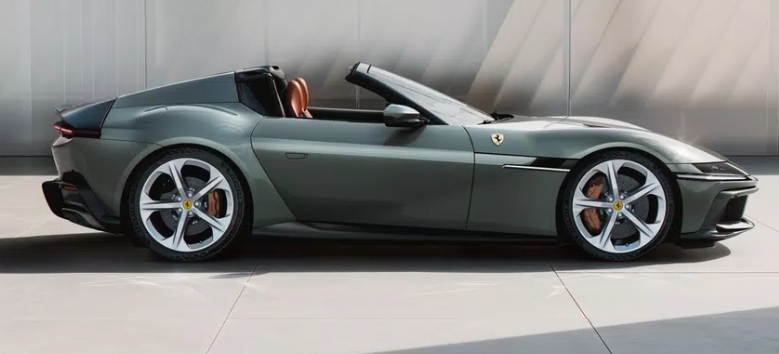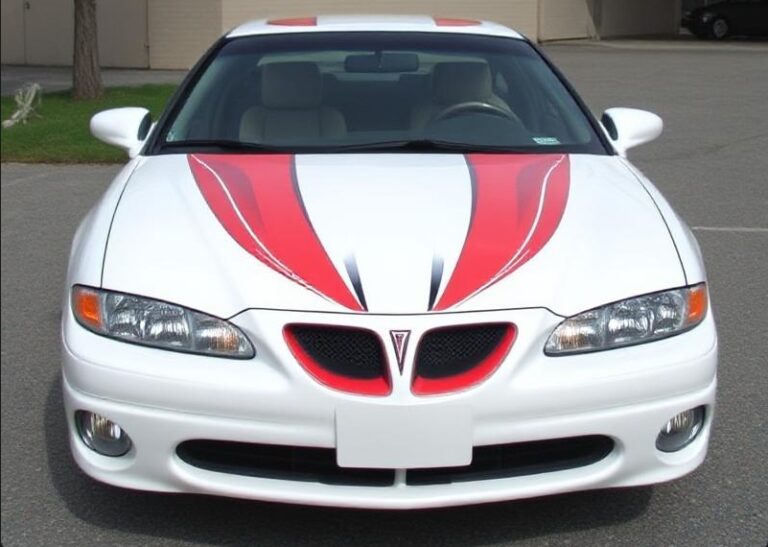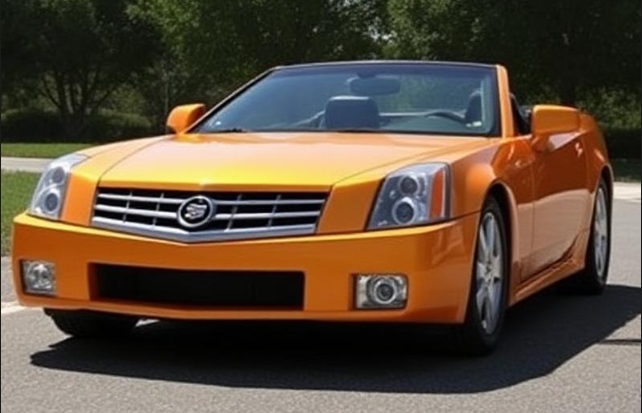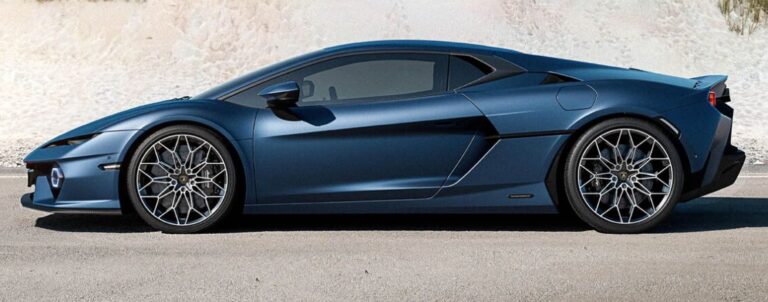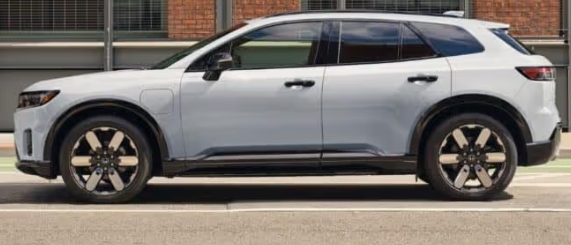The Torchbearer: The Lineage, Arrival, and Significance of the Ferrari 12Cilindri Evolution
To discuss the “evolution of the Ferrari 12Cilindri” is to engage in a fascinating paradox. The car, unveiled to the world in May 2024, has no historical models, no previous trim levels, and no production years to chronicle in the traditional sense.
It is brand new, a freshly minted chapter in the grand book of Ferrari. However, to understand the 12Cilindri is to understand the seven decades of engineering, passion, and aural drama that preceded it. Its evolution is not one of iterative model-year changes, but of a legendary bloodline. The 12Cilindri is the culmination of Ferrari’s most treasured tradition: the front-engined, two-seat, naturally-aspirated V12 berlinetta.
This article, therefore, will trace the direct ancestry of this new flagship, exploring the iconic predecessors that forged the path for its existence. It is a story of escalating power, technological revolution, and an unwavering commitment to the engine that defines the very soul of the Prancing Horse.
The Foundation of a Legend: The Front-Engined V12 DNA
The heart of Ferrari has always been its 12-cylinder engine. Enzo Ferrari himself was famously quoted as saying, “I build engines and attach wheels to them.” The very first Ferrari, the 125 S of 1947, was powered by a 1.5-liter V12. While the brand has produced legendary V8s and even flat-12s, the front-engined V12 Grand Tourer has remained its ultimate expression of performance and luxury.
The true spiritual genesis of the modern 12Cilindri can be traced to the 365 GTB/4, universally known as the “Daytona” (1968-1973). With its long bonnet hiding a magnificent 4.4-liter Colombo V12 and its muscular, aggressive styling, the Daytona set the template. It was brutally fast, achingly beautiful, and capable of crossing continents at incredible speed. It was the definitive supercar of its era and its design, particularly the early “Plexiglass” nose models, would serve as a direct inspiration for the 12Cilindri over fifty years later.
After the Daytona, Ferrari pivoted its flagship line to a mid-engine layout with the Berlinetta Boxer and Testarossa series. While iconic, these cars were different animals. It wasn’t until 1996 that Ferrari would return to the classic front-engine, rear-drive formula, and in doing so, created the direct modern lineage of the 12Cilindri.
The Modern Renaissance: From Maranello to Superfast
- The 550 Maranello (1996-2001) The 550 Maranello was a monumental car. It signaled Ferrari’s belief that a front-engined layout could still deliver world-beating supercar performance while offering superior comfort and usability for grand touring. Powered by a 5.5-liter, 478-horsepower V12, it was a masterpiece of balance and poise. Critically, it was launched exclusively with a classic gated six-speed manual transmission, endearing it to purists. The 550 was offered as a coupe and, in a very limited run, as the 550 Barchetta Pininfarina, a celebratory open-top model. It re-established the front-engined V12 as the pinnacle of the Ferrari range.
- The 575M Maranello (2002-2006) The 575M Maranello was an evolution (Modificata) of the 550. The engine was enlarged to 5.75 liters, boosting power to 508 hp. The most significant introduction was the option of an F1-style automated manual paddle-shift gearbox, a technology that would come to dominate future models. While a manual was still available, it was exceedingly rare. Handling was sharpened with adaptive suspension, and styling received subtle updates. Key variants included the Superamerica, a revolutionary convertible featuring a patented electrochromic glass targa top that could rotate 180 degrees. The optional Fiorano Handling Pack (FHP) offered stiffer suspension and improved braking for more focused driving.
- The 599 GTB Fiorano (2006-2012) The 599 GTB Fiorano represented a quantum leap forward. It was a fiercely technological car, powered by a detuned version of the 6.0-liter V12 found in the Enzo hypercar, producing a colossal 612 hp. Its aluminum chassis was more advanced, and its aerodynamics were revolutionary, most notably the “flying buttress” C-pillars that channeled air for downforce. It introduced Ferrari’s F1-Trac traction control system to a road car.
Models and Trims:
599 GTB Fiorano: The standard model.
HGTE (Handling Gran Turismo Evoluzione) Package: A factory-installed package introduced in 2009 that included stiffer springs, a lower ride height, revised magnetic dampers, stickier tires, and a sportier exhaust note. It transformed the 599 into a much sharper machine.
599 GTO (Gran Turismo Omologato): A limited-edition, track-focused monster. Lighter, more powerful (661 hp), and aerodynamically aggressive, it was essentially a road-going version of the experimental 599XX track car. It was the fastest road-legal Ferrari ever at the time of its release.
SA Aperta: A limited-run convertible version built to celebrate Pininfarina’s 80th anniversary, featuring the GTO’s more powerful engine.
- The F12berlinetta (2012-2017) The F12berlinetta was an exercise in extreme performance. The new 6.3-liter V12 produced a staggering 730 hp, making it the most powerful series-production Ferrari to date. Despite its immense power, Ferrari managed to make the F12 physically smaller and lighter than the 599 it replaced. Its styling was dramatic, dominated by the “Aero Bridge” on the front fenders which channeled air to increase downforce. The car was wildly fast and demanded respect from its driver.
Models and Trims:
F12berlinetta: The standard coupe.
F12tdf (Tour de France): A limited-production, hardcore variant paying homage to the legendary endurance race. Power was upped to 769 hp, weight was slashed, and aerodynamics were radically enhanced. Crucially, it introduced the first generation of Ferrari’s “Virtual Short Wheelbase” rear-wheel steering system, which dramatically improved agility. It was a raw, visceral, and challenging masterpiece.
- The 812 Superfast (2017-2024) The immediate predecessor to the 12Cilindri, the 812 Superfast took the F12’s formula and perfected it. The V12 was enlarged to 6.5 liters, producing 789 hp at a screaming 8,500 rpm, all without turbochargers or electric assistance. It was the last series-production Ferrari to be purely naturally aspirated, without any form of hybridisation. It integrated the second generation of rear-wheel steering and was the first Ferrari to use electric power steering. The result was a car of astonishing duality: a comfortable grand tourer that could transform into a ferociously capable supercar at a moment’s notice.
Models and Trims:
812 Superfast: The coupe version.
812 GTS: The convertible spider version, marking the return of a series-production front-engined V12 convertible for the first time in 50 years (since the Daytona Spider).
812 Competizione & Competizione A: The ultimate, limited-edition farewell to the 812 platform. Think of it as the 812’s “tdf.” The engine was re-engineered with exotic materials like titanium connecting rods to produce 819 hp and rev to an astonishing 9,500 rpm. The car was a showcase of extreme aerodynamics, including a patented vortex-generating rear screen on the coupe. This incredible engine would form the direct basis for the one found in the 12Cilindri.
The Arrival: The Ferrari 12Cilindri (2024-Present)
Launched in Miami Beach to coincide with the 70th anniversary of Ferrari in North America, the Ferrari 12Cilindri (which simply means “12 Cylinders” in Italian) is not just a successor, but a statement piece. It is a defiant celebration of the naturally-aspirated V12 in an era rapidly succumbing to electrification.
Design and Philosophy: The styling marks a deliberate departure from the flowing, muscular lines of the F12 and 812. Instead, Flavio Manzoni and the Ferrari Styling Centre looked back to the 1968 Daytona. This is most evident in the sharp, black plexiglass-like band that spans the front of the car, housing the headlights and evoking the clean, futuristic look of its ancestor. The rear is equally dramatic, featuring a delta-wing theme and active aerodynamic flaps (or “nolders”) that can operate independently to optimize downforce and stability.
The Powertrain: The Final Evolution? At its heart is the F140HD V12 engine, a direct evolution of the masterpiece from the 812 Competizione. It maintains the 6.5-liter displacement but incorporates numerous refinements to meet modern emissions standards without sacrificing its soul.
Power: 819 hp (830 CV) at 9,250 rpm.
Redline: A breathtaking 9,500 rpm.
Technology: This power is achieved through remarkable engineering, including titanium connecting rods (40% lighter than steel), a lighter valvetrain with sliding finger followers derived from Formula 1, and a rebalanced, lighter crankshaft. A clever software strategy called “Aspirated Torque Shaping” electronically modifies the torque curve in 3rd and 4th gears to enhance the feeling of progressive, endless acceleration.
Chassis and Technology: The 12Cilindri is built on an all-new, 100% aluminum chassis that is 15% stiffer than the 812’s. It incorporates the latest generation of Ferrari’s dynamic control systems, including four-wheel independent steering (4WS) for supreme agility, brake-by-wire technology, and the latest Side Slip Control (SSC 8.0).
Models and Trim Levels at Launch (2024): Ferrari does not offer “trim levels” in the conventional sense (like LX, EX, etc.). Instead, personalization is nearly infinite through optional equipment and the “Tailor Made” program. At its global debut, Ferrari announced two distinct models:
Ferrari 12Cilindri: The fixed-head coupe, or berlinetta.
Ferrari 12Cilindri Spider: The open-top version, featuring a retractable hardtop that can operate in just 14 seconds.
.
You’ve got that cool car, but is it resting in its own cool place?
It’s visually pleasing for the surrounding areas outside of your home to look as awesome as what’s stored inside your garage! If you desire a truly inspirational environment, you should check into these plans!

.
Conclusion: A Bridge Between Eras
The Ferrari 12Cilindri has no history of its own, yet it carries the weight of all Ferrari history on its shoulders. It is the product of an unbroken chain of evolution stretching back through the 812, F12, 599, 575M, and 550, with its soul harking back to the legendary Daytona. It is a technological tour de force, a design statement, and perhaps most importantly, a defiant roar in the face of an electric future. In a world where the visceral scream of a naturally aspirated V12 is an endangered species, the 12Cilindri is not just the latest flagship—it is the dedicated torchbearer for the very essence of Ferrari. Its own evolution has only just begun.
